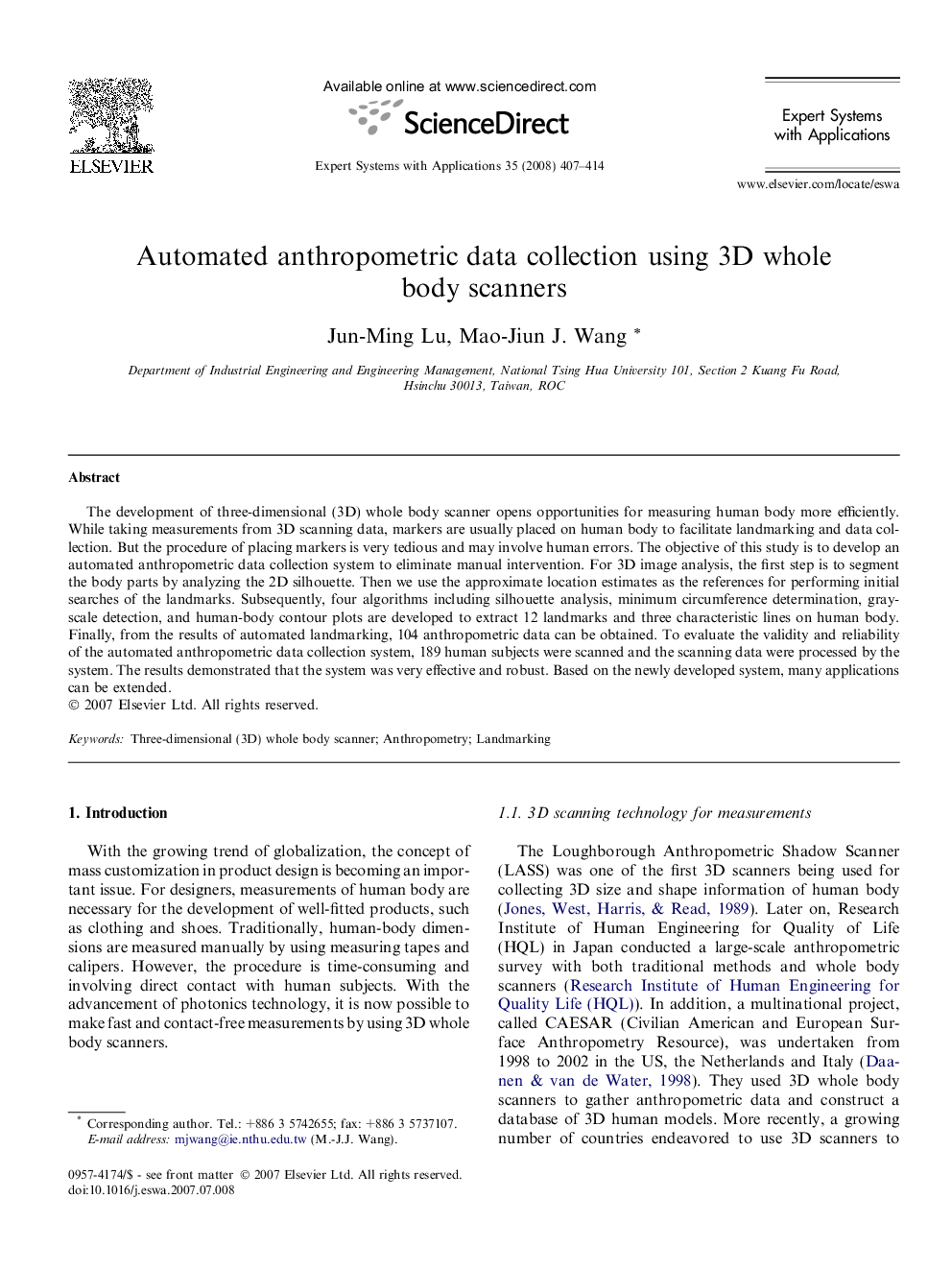| Article ID | Journal | Published Year | Pages | File Type |
|---|---|---|---|---|
| 387795 | Expert Systems with Applications | 2008 | 8 Pages |
The development of three-dimensional (3D) whole body scanner opens opportunities for measuring human body more efficiently. While taking measurements from 3D scanning data, markers are usually placed on human body to facilitate landmarking and data collection. But the procedure of placing markers is very tedious and may involve human errors. The objective of this study is to develop an automated anthropometric data collection system to eliminate manual intervention. For 3D image analysis, the first step is to segment the body parts by analyzing the 2D silhouette. Then we use the approximate location estimates as the references for performing initial searches of the landmarks. Subsequently, four algorithms including silhouette analysis, minimum circumference determination, gray-scale detection, and human-body contour plots are developed to extract 12 landmarks and three characteristic lines on human body. Finally, from the results of automated landmarking, 104 anthropometric data can be obtained. To evaluate the validity and reliability of the automated anthropometric data collection system, 189 human subjects were scanned and the scanning data were processed by the system. The results demonstrated that the system was very effective and robust. Based on the newly developed system, many applications can be extended.
